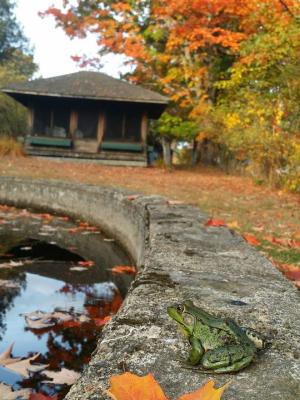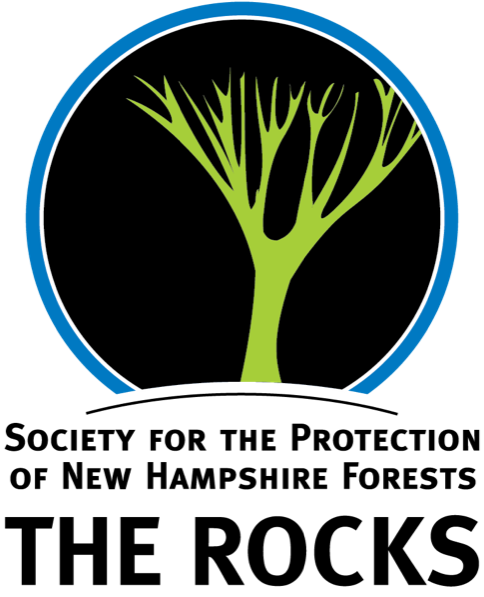The Rocks is home to several species of native animals, from bear and moose to wild turkey, spotted salamanders, and countless bird species. Many of these animals, their habits, and their habitats are featured in our Natural History Programs, offered at The Rocks and other venues throughout the year.

The Forest Society initiated a wildlife habitat improvement program in 1996, helping to sustain the countless animals who make the property their home. Our habitat enhancement efforts include pruning the apple trees scattered throughout the property for wildlife use. Many species rely on apples as an important food source in the late summer and fall months. It's not uncommon to see wild turkeys browsing on fallen apples, along with deer, moose, and black bear, who will climb the trees to reach the apples on higher branches.
We also delay mowing some of the fields at The Rocks to allow habitat for ground nesting birds like Woodcock, and Bobolink. The mixture of meadow, hardwood forest, wetlands, and Christmas tree fields at The Rocks creates habitat for countless bird species. Bird watchers will want to bring their binoculars and favorite guide book along as they explore our trail system. Sightings include cedar waxwings nesting in the Christmas trees, kestrels hovering over the meadows seeking prey, the aggressive northern goshawk, pileated woodpeckers pounding away at trees in the woods, and ruffed grouse drumming around the property during the spring mating season.
Spotted Salamanders and Leopard Frogs breed in the vernal pools during the early spring, and visitors may spot one of these amphibians in the pond of the formal garden at The Rocks. Garter snakes also take advantage of the garden habitat, warming themselves on the granite ledges and stone walls and catching frogs.
Coyotes and foxes are a regular site in our fields, where they hunt for rodents (which often damage Christmas tree seedlings by eating the bark around the base of the trees).
To learn more about the diverse wildlife at The Rocks, we encourage you to participate in one of our Natural History Programs, take an Experiential Tour of the property, or explore The Rocks on your own.

